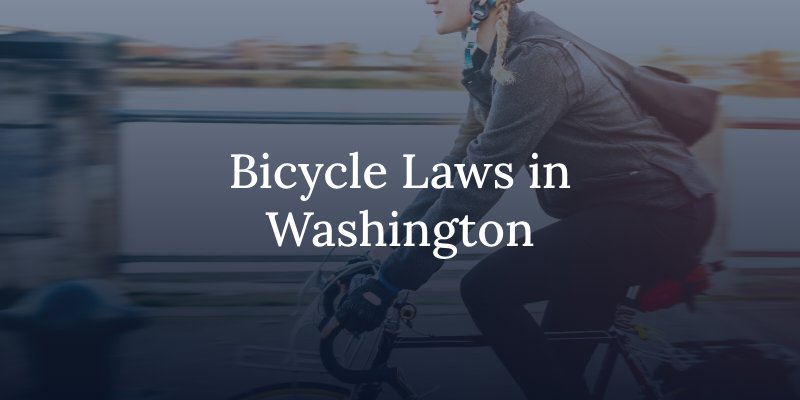Washington State’s Bicycle Laws
Washington State has several bicycle laws aimed at ensuring the safety of cyclists and other road users.
General rights and responsibilities include:
- Bicycles are vehicles: Cyclists have the same rights and duties as motor vehicle drivers. They must follow traffic laws, including stopping at signs and signals.
- Riding on the road: Cyclists should ride as far to the right as is safe, except when turning left, passing another vehicle, or avoiding hazards.
- One-way streets: Cyclists can ride as far to the left as is safe on one-way streets.
- Riding two abreast: Cyclists may ride two abreast in a lane, but they must not impede traffic.
Does Washington Have Bicycle Helmet Laws?
Washington State has no statewide bicycle helmet laws, but many local jurisdictions require helmets. The areas in Washington State that require helmets for cyclists include:
Cities and Counties with All-Age Helmet Requirements
- Aberdeen (since 2001)
- Bainbridge Island (since 2001)
- Bellevue (since 2001)
- Bremerton (since 2000)
- DuPont (since 2008)
- Eatonville (since 1996)
- Fircrest (since 1995)
- Gig Harbor (since 1996)
- Kent (since 1999)
- Lynnwood (since 2004)
- Lakewood (since 1996)
- Milton (since 1997)
- Pierce County (unincorporated areas, since 1994)
- Port Angeles (since 1994)
- Port Orchard (since 2004)
- Puyallup (since 1994)
- Renton (since 1999)
- Snohomish (since 1999)
- Spokane (since 2004)
- Steilacoom (since 1995)
- University Place (since 1996)
- Vancouver (since 2008)
Cities with Age-Specific Helmet Requirements
- Orting: Helmets required for those under 17 (since 1997)
- Poulsbo: Helmets required for those under 18 (since 1995)
Special Areas
- All military installations: Helmets are required for cyclists of all ages.
While these areas have mandatory helmet laws, other cities and rural Washington State areas may not have helmet requirements. It’s always advisable to wear a helmet regardless of local laws for personal safety.
Some cities have de-emphasized enforcement in recent years, recognizing that fines can disproportionately impact low-income cyclists, and some places, like Seattle, have removed their laws due to the conversation about the equity of helmet law enforcement.

Other Bicycle Laws in Washington State
Lights and Reflectors
At night cyclists must have a white front light visible from 500 feet and a red reflector or light visible from 600 feet to the rear.
Bike Lanes and Sidewalks
Cyclists are not required to use bike lanes but must follow lane directions if they do. Riding on sidewalks is allowed unless prohibited by local ordinances. Cyclists on sidewalks must yield to pedestrians and give an audible signal before passing.
Electric Bicycles
Washington law recognizes three classes of e-bikes, with different rules for where they can be ridden:
- Class 1 and 2: May be ridden on most trails and bike lanes.
- Class 3: Not allowed on shared-use paths unless posted otherwise.
Hand Signals
Cyclists must signal turns and stops with hand signals. Left turns are signaled with the left hand extended out, right turns with the right hand, and stops by extending the left hand downward.
Yielding and Stopping
Cyclists must yield the right-of-way to pedestrians in crosswalks and follow the same rules as cars at intersections.
These laws help ensure that cyclists and other road users can share the road safely. Some local jurisdictions may have additional rules.
Next Steps
If you have questions after a bicycle accident or citation in Washington, Brumley Law Firm is available to discuss your situation. You can contact us at (833) 832-2727 or through our online form to schedule a consultation with a Seattle bicycle accident attorney. Our attorneys are available to discuss your situation and provide information about your options under Washington law.